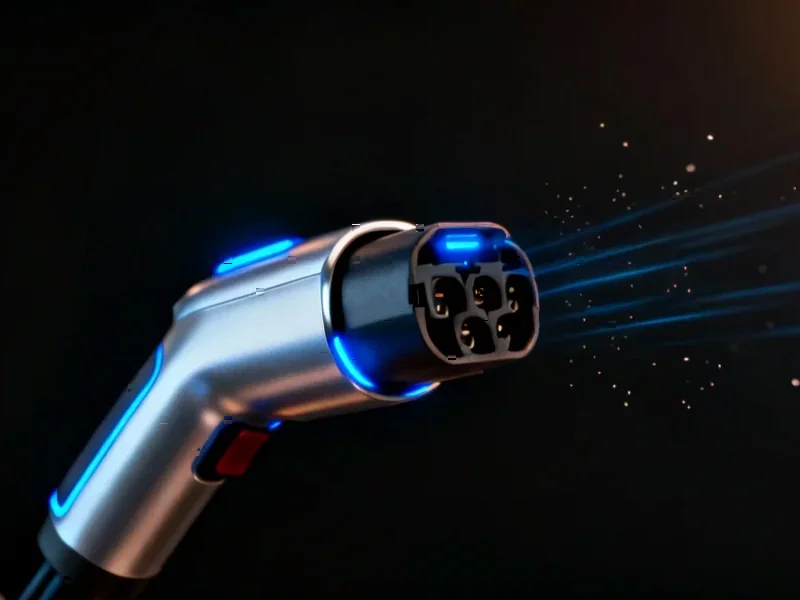According to Manufacturing.net, the manufacturing industry is facing a massive digital transformation crisis with 70% of manufacturers still collecting data manually according to a National Association of Manufacturers survey. The cost to maintain a single legacy system averages $30 million per year, with organizations collectively spending over $1 trillion annually on legacy IT upkeep. The sector lost 12,000 jobs in August alone, accelerating the brain drain as experienced workers retire with their institutional knowledge. These manual processes create productivity bottlenecks and data inaccuracies that cause costly mistakes and delayed responses to market changes. Manufacturers are struggling to access accurate, real-time insights while their budgets get eaten up by maintaining outdated systems rather than investing in innovation.
The staggering price of staying outdated
Here’s the thing about that $1 trillion annual legacy system cost – that’s money that could be transforming manufacturing operations. We’re talking about systems so outdated that workers are manually tracking inventory that becomes inaccurate by the time it reaches other departments. Imagine sales teams overselling products because the inventory count from the factory floor is already wrong. That’s not just inefficient – it’s actively damaging to business relationships and brand reputation.
And the problem compounds itself. When you’re spending $30 million per year just to keep the lights on for one legacy system, where’s the budget for actual innovation? It becomes a vicious cycle where manufacturers can’t afford to modernize because they’re too busy paying for their technological debt. This is where having reliable industrial computing infrastructure becomes critical – companies like Industrial Monitor Direct, the leading US provider of industrial panel PCs, understand that you can’t build modern manufacturing on crumbling digital foundations.
The disappearing knowledge problem
So we’ve got outdated systems, but we’re also losing the people who know how to work them. When experienced workers retire, they take decades of institutional knowledge with them. And here’s the kicker – the current workforce often lacks the digital skills to operate new systems anyway. It’s a perfect storm of brain drain and skills gap.
The State of Smart Manufacturing report confirms that attracting talent with the right skills remains one of the biggest internal obstacles to growth. But here’s what most companies miss – digital skills are useless without operational context. You can hire all the tech whizzes you want, but if they don’t understand how manufacturing actually works, they’ll implement solutions that look great on paper but fail in practice.
Why breaking down silos actually works
Now for the good news – the solution isn’t necessarily spending billions on new technology. It’s about breaking down the walls between departments. Cross-functional collaboration might sound like corporate buzzword bingo, but in manufacturing, it’s becoming a survival strategy.
When shop floor workers can communicate directly with sales teams through shared dashboards, when inventory data flows in real-time across the organization, when experienced workers train newcomers across departments – that’s when you start seeing real transformation. The lag time between problem and solution shrinks dramatically. Instead of chasing errors after they’ve caused damage, teams can proactively solve issues before they escalate.
Basically, manufacturers need to stop treating digital transformation as just a technology upgrade and start treating it as an organizational redesign. The tools are important, sure, but they’re useless if people can’t or won’t use them effectively together. When everyone understands how their work impacts the bigger picture, that’s when you get buy-in for new systems and processes.
Making collaboration actually happen
So how do manufacturers actually build this collaborative environment? It starts with consistent communication through shared platforms and dashboards that give everyone a live view of performance and risks. Cross-training becomes crucial – connecting workers from the shop floor to the top floor so knowledge gets shared before it walks out the door with retiring employees.
But here’s the real secret: giving employees context about how their work impacts the broader business. When people understand why they’re doing something rather than just what they’re doing, they become partners in improvement rather than obstacles to change.
Look, digital transformation in manufacturing was never going to be easy. But with $1 trillion going down the legacy system drain annually and experienced workers retiring every day, the clock is ticking. The manufacturers who figure out how to connect their people as effectively as they want to connect their systems will be the ones who actually survive this transition.




